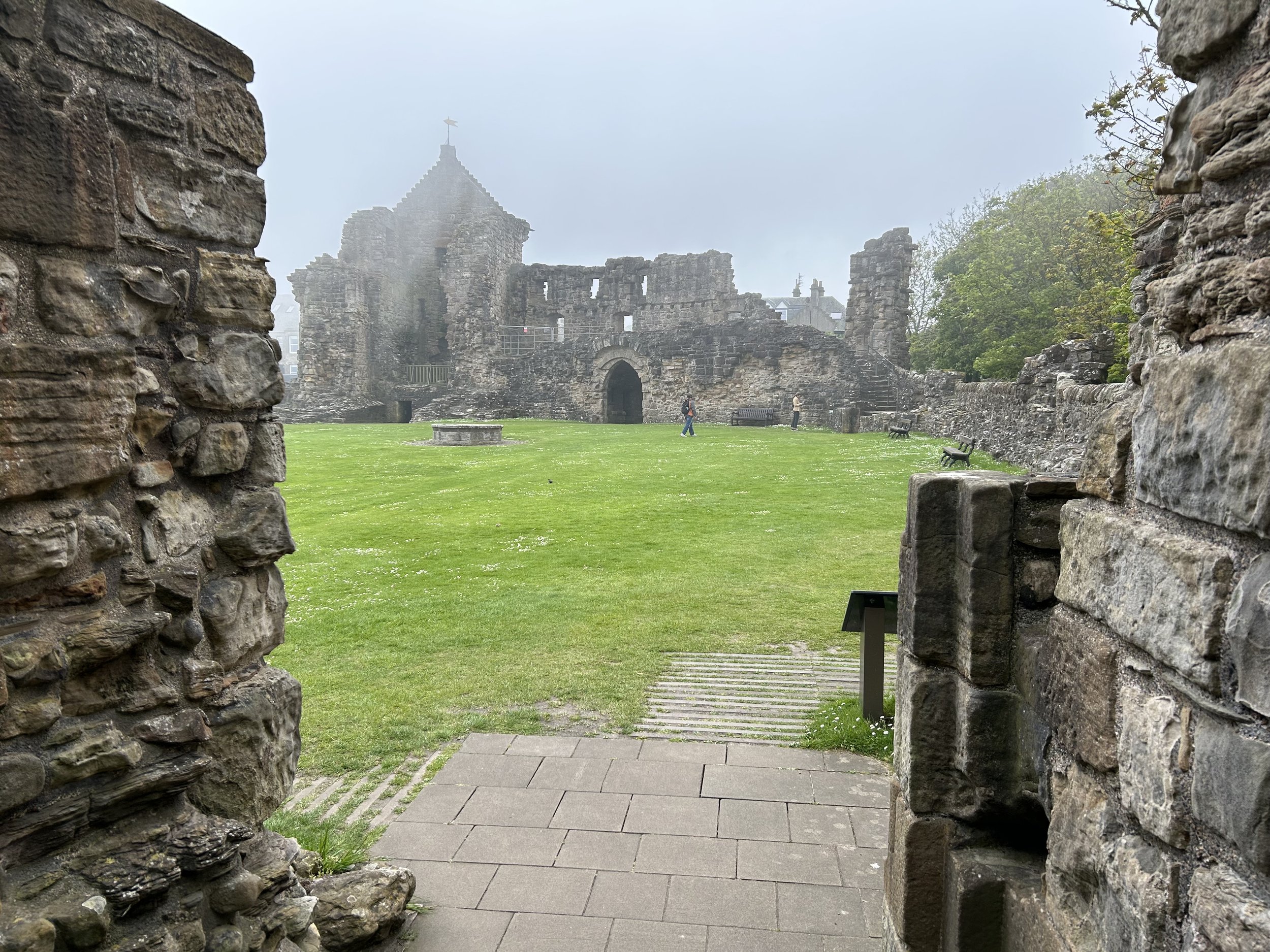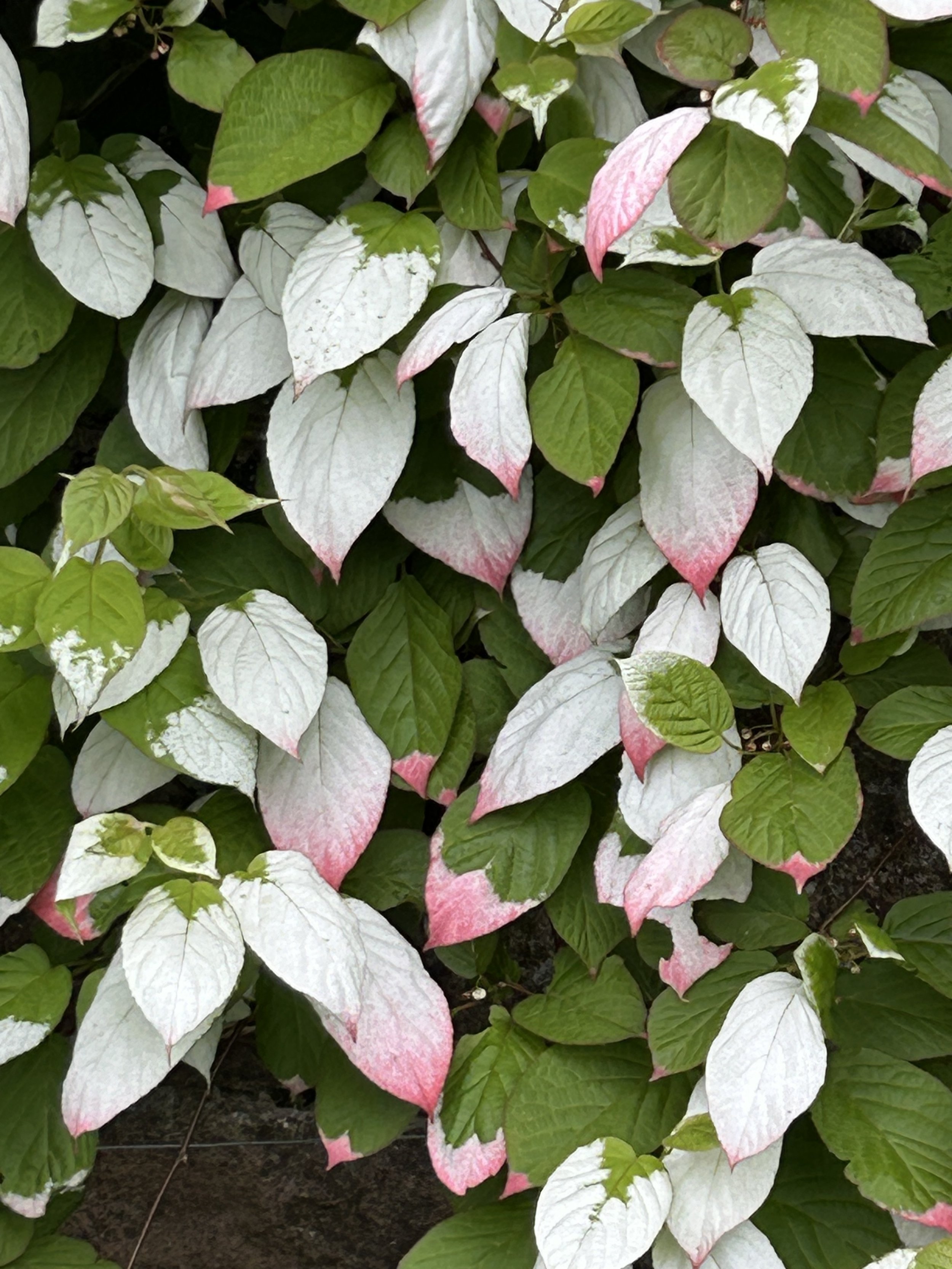Driving out of the city of Edinburgh, we headed northeast with a full day’s itinerary. Our biggest stop would be St. Andrews, the site of the famous golf courses, but first, we wanted to see the town of Falkland in Fife.
The charming, picturesque village is home to Falkland Palace, the country estate (and escape) of Scottish Stuart royalty, including James IV and Mary, Queen of Scots.
Built in the 16th century, the beautifully-restored Falkland Palace is one of the finest examples of Renaissance architecture in Scotland. The Stuarts would enjoy the gardens and the grounds, hunt in the forests, pursue falconry, play tennis on one of the U. K.’s oldest real tennis courts, and entertain friends and family. Unfortunately, we weren’t able to go inside the palace, because we just didn’t have enough hours in the day for all we wanted to do.
That’s one of the hardest things about traveling in Scotland—there’s so much to see and do and so little time…But alas, that’s a good problem to have.
St. Andrews
Among other things, Scotland is famous for whiskey and golf, but we aren’t big fans of either. Still, we had heard that St. Andrews offers much more than golf, so we looked forward to our visit there.
First, our driver/guide took us to the beach, but it wasn’t just any beach to us. That beach is where the opening scene of the award-winning movie Chariots of Fire was filmed. The movie tells the story of Eric Liddell, the Scottish runner who won a Gold Medal in the Paris Olympics in 1924, exactly 100 years ago. As a Christian, Liddell refused to run on Sunday because it’s the Sabbath, so the Olympic committee let him run in a different race a few days later. He won the Gold in that event. He spent the next year making appearances around Scotland, but because he felt called by God to go to China, he left fame and fortune behind to serve God and others as a missionary. It was almost a year to the day after he won the Gold Medal.
Then we visited the most famous golf course to see the iconic bridge where everyone gets their photo taken.
After our photo op, we went on to the castle ruins, one of my favorite sites that day. The weather had turned moody, damp, and chilly—perfect for exploring an ancient ruin.
During its 450-year history, St. Andrews’ castle was a bishop’s palace, a fortress, and state prison. It was a focal point of the church in medieval Scotland. Some key events of the Reformation happened here, including the burning of a Protestant preacher and the resulting murder of a Catholic cardinal. Then, a siege followed that caused major damage to the structure. After bishops were abolished in 1592, the castle began to decline until in 1801, the great hall collapsed and fell into the sea.
A rock dove skimming the sea below the castle ruins
After our time at the castle, we took a short walk to the Cathedral. Started in 1160, it was finally dedicated in 1318 in the presence of Robert the Bruce, who was king at the time. By far the largest church of its time, it now lies in ruins, but is still worth a visit.
Glamis Castle
Our last stop of the day was Glamis Castle. As we were riding up the very long driveway, approaching the castle, we saw a woman in a fancy hat and her friends driving an actual horsecart up to it. If it hadn’t been for our car, we would have thought we’d stepped back in time. We got out of our car, leaving our guide to park it, and followed on foot in order to not spook or overtake the horse. Turns out, there was a horsecart driving competition. It was a charming and delightful walk down a long driveway, with a huge, historic castle waiting at the end of it.
Built in the 1400s, the castle has a long, rich history. Both Mary, Queen of Scots and the Jacobite King James the VIII & the III stayed here, and Sir Walter Scott visited in 1793. Shakespeare’s MacBeth is said to have been set here. And in modern times, it was the childhood home of Her Majesty Queen Elizabeth The Queen Mother and birthplace of HRH Princess Margaret. Queen Elizabeth and Princess Margaret often visited with their grandparents here.
The tour of the castle was fascinating, and the extensive Gardens are famous. We wandered through, taking photos, learning new plants, and getting some ideas.
By the time we finished in the gardens, we were a bit weary physically and mentally from our long day. But with a nice dinner and good night’s sleep, we’d be ready to experience more of the beauty and history of Scotland.
My book, Glimmers of Hope, is on sale for $12 in the Shop for a limited time. And grab some packs of Joy notecards for Christmas before they sell out. Remember that every purchase you make through the Shop helps support Glimsen. Thank you!
I'm honored that you've taken time out of your day to stop by my blog, Glimsen. If you like what you see, click here to receive my posts and updates by email, and you'll also get a free gift of beauty in your inbox. I look forward to connecting with you!










